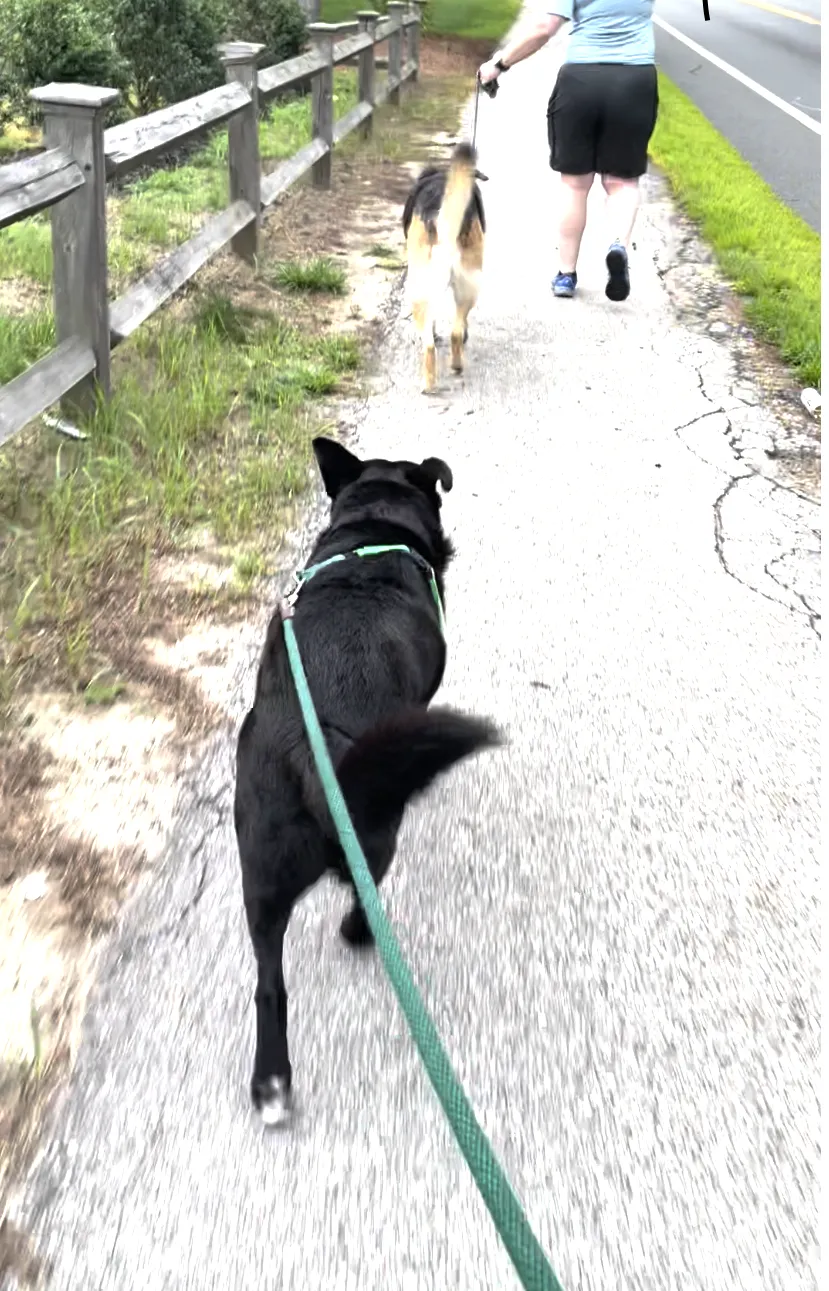

4 Ways to Improve Your Leash Walking Right Now!
“Make a connection before you give direction.” - Dr. Jennifer Zeligs
4 Ways to Improve Walks With Your Dog Right Now
Is your dog always pulling on leash? Do they stop and sniff for ages? Are you sure you've tried absolutely everything and you're still frustrated and annoyed every time you head out with your beloved pup?
Do not despair! These things happen to everyone.
The good news is there are things you can do right now that will help!

1. Put Your Phone Away
Our dogs senses are much more sensitive than ours. Out on a walk your dog is hearing a potato chip bag crinkle in a deli behind you, smelling a dog around the next corner, and seeing bikes, squirrels, people in hats, cars, flags waving in the breeze, and a hundred other things.
We're already likely to notice things later than our dogs. If you're looking at your phone it might be too late. You might think your dog is "suddenly" eating a chicken bone or barking at that cat but when you keep your eyes on the dog you have more time to see the warning signals and take action!
2. Put Your Headphones Away, Too
You've put your phone in your pocket but you really want to hear who murdered who on that podcast. I get it, me too! It's just not safe, though.
Many of my dog training clients report their dogs having scary reactions or bolting in fear after being surprised on the street. We can't prevent every ambush but your odds of preventing one go up exponentially if your ears are tuned in to your surrounding. The phone call can wait, your dog's safety can't.
3. Learn Dog Body Language
Many of the frustrating, scary, and unsafe experiences we have while walking our dogs are rooted in miscommunication. Our dogs speak with their body language and that's something we have to study so we can understand them. Often our dogs are telling us they're worried about a skateboard or excited about a person long before they jump and spin on the leash but if we don't know how to speak their language we won't understand until it's too late.
Get started with these resources:
A video by The Family Dog
Doggie Language book by Lili Chin
4. Let Your Dog Walk In Front of You
Yup! It's ok, even preferable, for our dogs to walk in front of us.
Traditional trainers have said, "Never let your dog walk in front of you or they'll think they're in charge." We've learned that's not true.
Ideal leash walking is a conversation between the handler and the dog. Both ends of the leash get to request starts, stops, and changes in direction while your leash stays loose. If your dog is behind your or walking tight to your side you won't be able to read their body language and that means you won't be able to hold up your end of the conversation.
Next Step: Book a training session
Leash walking is a complex behavior to teach our dogs and our humans. It's also an important part of enjoying everyday life with your dog. Whether you've worked on it before or not, I can help you smooth out the rough spots and make good forward progress (on a loose leash).
Fill out the contact form to book an appointment now!




